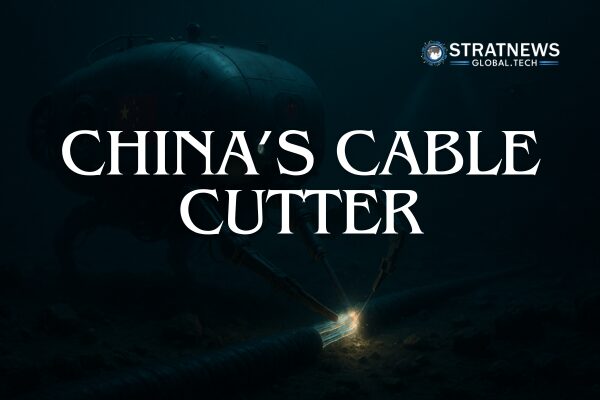China’s ‘new’ cable cutter is a tool unlikely to cause large-scale internet blackouts and will remain just an irritation. However, developing Indian repair capability remains as important as ever.
Buried deep under the oceans, subsea fiber-optic cables carry over 99 percent of international internet traffic, and over USD 10 trillion of transactions daily. There are about 600 subsea cables, covering over 1.5 million kilometres. The subsea cable network is central to the global information economy. But a new subsea cable cutter developed by China Ship Scientific Research Centre threatens to disrupt this communications backbone, raising alarm in India, and elsewhere.
However, I argue that comparable technologies already exist and the Chinese tech, while concerning, should not be a cause for alarm. This is because severing subsea cables would pose major logistical and geopolitical challenges for China. Instead of focusing on the cable cutter, India should therefore prioritize enhancing its detection and repair capabilities.
What has China Developed?
A team of Chinese researchers has developed a machine capable of cutting cables up to 4000 meters deep, twice the current operational depth. However, the technology demonstrated may not qualify as a breakthrough, as it is likely that the United States and Russia already possess similar technology, or could easily develop it. Because, at the heart of it, this machine is just a rotating blade and a motor allowing controlled rotation to sever armored protection. Moreover, repair ships already routinely perform cable-cutting operations at current depths (2000 meters).
Furthermore, cables deeper than roughly 1500 metres are typically thin and lack armor, because of three reasons. First, armored cables at these depths would risk snapping under their own weight due to water pressure. Second, this depth protects against more routine threats, like trawling and fishing. Third, the depth at which these cables lie means that bringing up armored cables for any required repair is a complex process and extremely costly. Consequently, a device specifically designed to cut armored cables at these depths is unnecessary.
Given this, it seems more that this device is part of a narrative, rather than an actual threat. Now, let’s explore the geopolitical aspect of why cable-cutting in general is a difficult business.
China’s Cable Cutter Unlikely to do Major Damage
China is unlikely to cause significant damage for two main reasons. First, if China aims to cut cables anonymously, it would rely on plausible deniability through “accidental” incidents like fishing or trawling mishaps. These grey-zone tactics would be their preferred strategy to employ. Such incidents are difficult to attribute directly to State action, as evidenced historica
Second, if China intends severe disruption, it would need to cut many cables simultaneously . If this does happen, China loses the attribution mask. Such overt actions would escalate geopolitical tensions significantly because cables inherently connect multiple countries. Targeting cables connected to India would inadvertently impact numerous other nations, amplifying international backlash. Hence, isolating a single country without broader geopolitical fallout is challenging.
Therefore, China cutting too little or too many cables does not seem to achieve any outcomes.
India Should Develop Subsea Repair Capability
Despite the lack of devastating risk from China, grey-zone warfare and even accidental mishaps like cable damage due to fishing and trawling and natural disasters is still a very real phenomenon. India should take steps to improve its position on the 17 cables that touch its shores across 5 cities, Mumbai, Chennai, Kochi, Tuticorin and Thiruvananthapuram.
First, it is imperative that India builds indigenous capability to do subsea cable repair. Currently, India has to depend on foreign partners for cable repairs in case of outages, which could lead to delays. The lack of Indian repair ships is a vulnerability flagged by the Telecom Regulatory Authority of India as well. Currently, the three cable cuts in Yemen will take about 8 weeks to fix, which could have been expedited with Indian repair ships. This deficiency needs to be corrected immediately, and measures like Public-Private Partnerships (PPPs) or investment by the Indian Government via the Navy into specialized repair vehicles would bolster India’s place. It could also allow India to assist other countries without repair capabilities and this could boost India’s diplomatic ties with assisted nations and could be used as a foreign policy tool.\
Second, taking a page out of Australia’s playbook, India should set up cable protection zones in its Exclusive Economic Zone to protect against accidental damage from fishing and trawling. Moreover, patrolling as a concept is desirable, to pre-emptively protect from any damage, accidental or intentional, and there are multiple forms of implementation, ranging from naval cable route patrols, to underwater drones to acoustic monitors (sensors) paired with AI monitoring.
Implementing these measures will bolster India’s resilience against existing subsea vulnerabilities.


